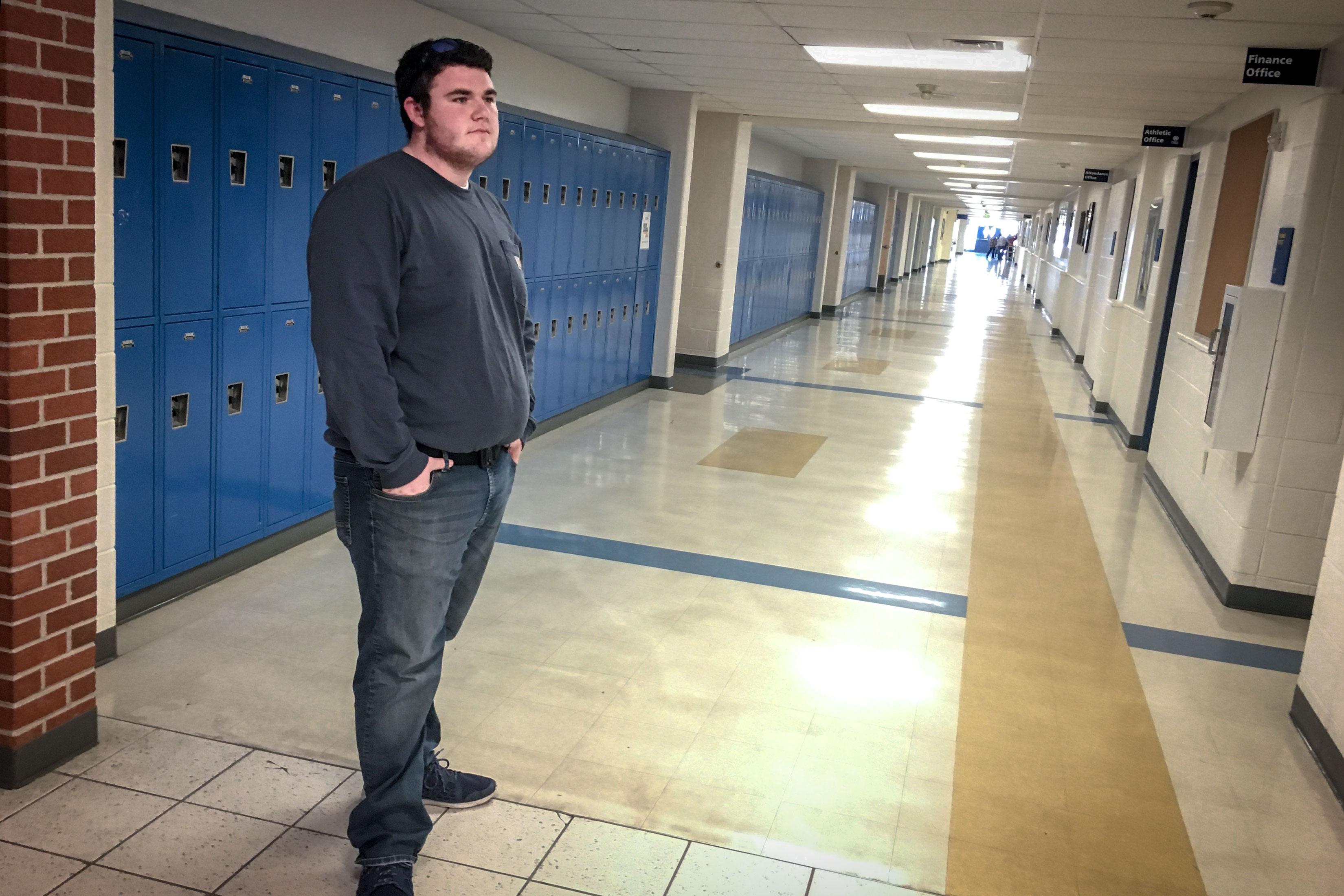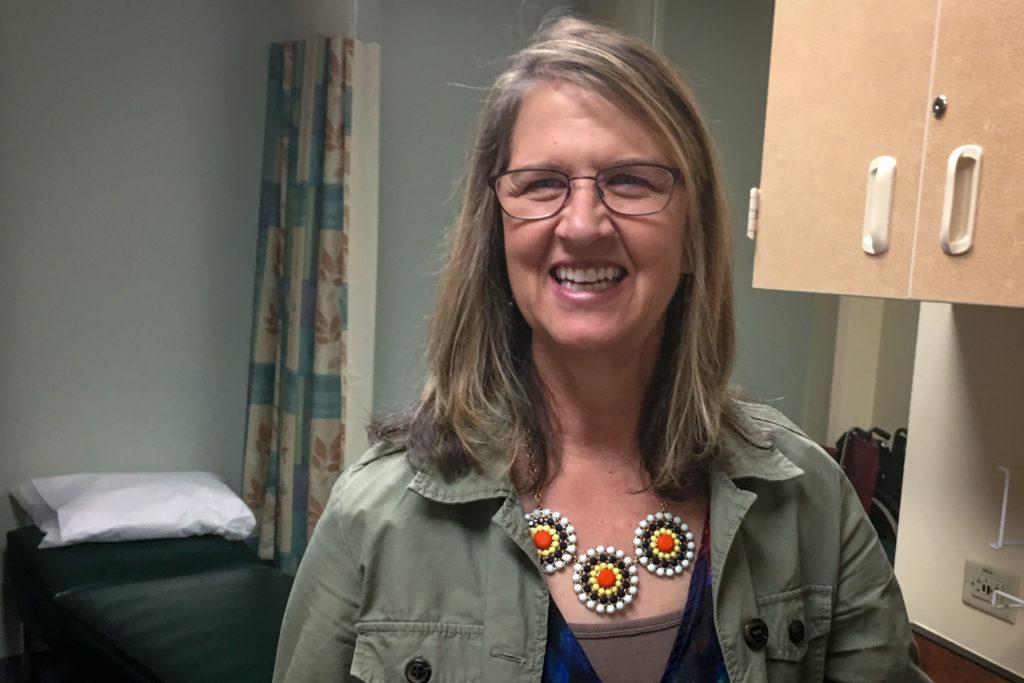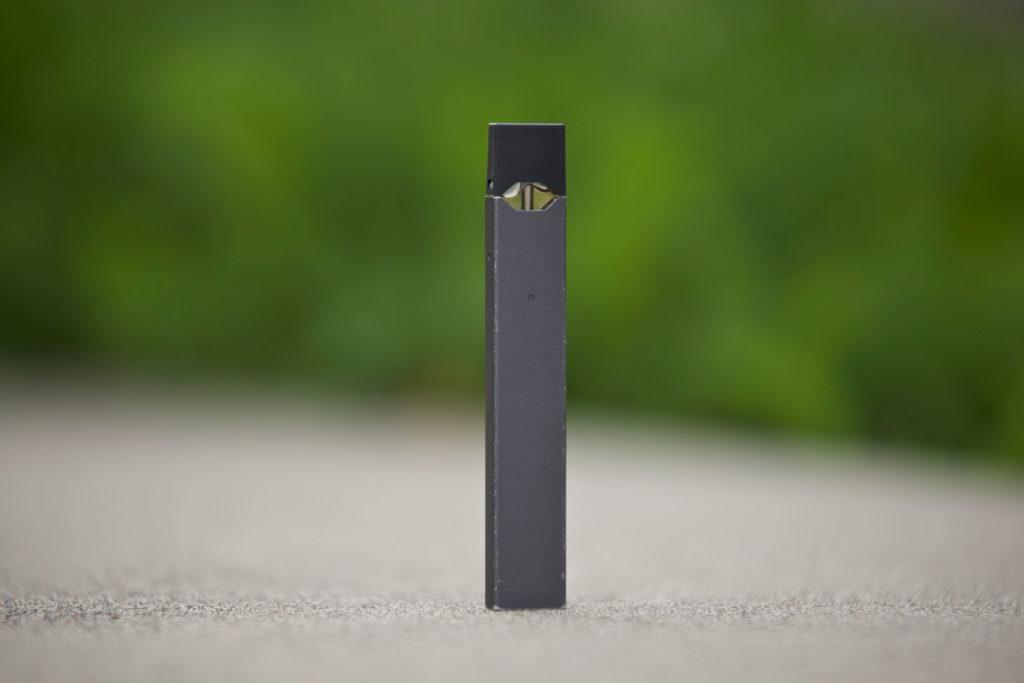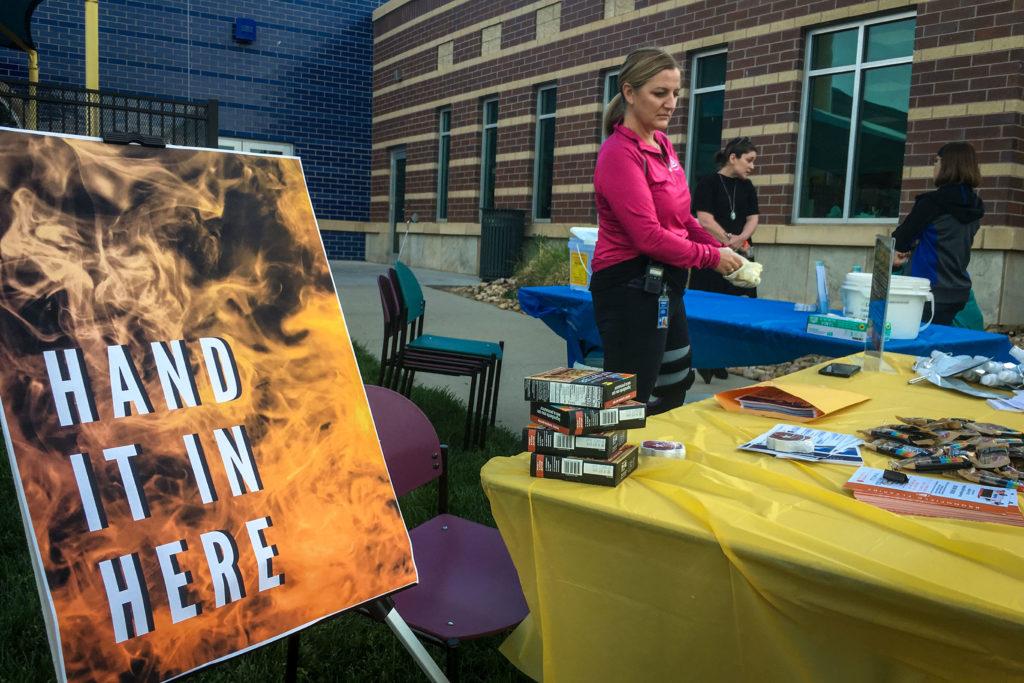
Jim Lynch started smoking regular cigarettes in seventh grade. He wanted to fit in. The trouble is he’s an active person and sang in the choir. Smoking made his life hard so he switched to the electronic kind.
“I heard all the myths about vaping being a healthier way to smoke and a way to help people that wanted to quit smoking,” Lynch said.
By the time he was a student at Wheat Ridge High, Lynch was “severely addicted.” Each day, he was going through a JUUL e-liquid pod, which is equivalent to a pack of cigarettes. He got the shakes without a fix of nicotine and “got really bad headaches,” he said. “It would make me sick; like it would make me feel sick to my stomach.”
The turning point came when his choir teacher caught him vaping in class. The school told his biggest role model, his dad.
“Hearing how disappointed he was when he found out about it was tough,” he said.
Lynch quit cold turkey, the achiest, most irritable, three days of his life. "And I would never really wish that on anybody," he said.
Teens are using e-cigarettes at increasing rates and there isn’t much to help them stop. Colorado tops the nation for teen e-cigarette use. An estimated 27,000 Colorado high schoolers report vaping more than 10 days a month. The state has few programs, shrinking resources and little research available to help them stop.
The school nurse who helped Lynch quit, Rhonda Valdez, referred him to a call line the state runs to help smokers quit and a tool kit from Stanford University. She gave him toothpicks and breath mints to help him with cravings. Valdez said Lynch didn’t start vaping again.
“He’s a self-motivator. He’s like my poster child, no doubt,” she said with pride — even though she admits he’s an outlier.
Most kids need more help to quit than Lynch needed and Valdez’ district is trying to provide it by doubling the number of school nurses. They’ll also be able to help students with drug intervention and mental health. Even with the incoming help, with so many students vaping, they’re scrambling to keep up.
“It’s worrisome and frustrating,” Valdez said.

At the same time, the money available to help teens quit has shrunk. The shortfall comes from the decline of conventional smoking. Taxes on cigarettes help pay for state anti-tobacco efforts. With fewer traditional cigarettes sold, there’s less money coming in. State tobacco communication strategist Alison Reidmohr said there’s no statewide tax on vaping products so more vaping isn’t creating any new funding.
“More people are using more nicotine products,” she said. “Our young people are facing an epidemic of vaping. We're not funded to deal with vaping products. And so we've got more problems than we've seen before and fewer resources with which to deal with them.”
One source of potential funding could be money the 1998 tobacco settlement. But a recent report from the Campaign for Tobacco-Free Kids found that despite states receiving more than $27 billion from the tobacco settlement and tobacco taxes, they “continue to severely underfund tobacco prevention and cessation programs proven to save lives and money.” They’re using the money for other things.
Colorado spends nearly $24 million a year on tobacco prevention, but it’s less than half of what the Centers for Disease Control and Prevention recommends, and a fifth of what the industry spends on marketing, according to a recent report.
Colorado saw a quadrupling of the number of minors calling the state’s free cessation QuitLine in 2018, Reidmorh said. But there’s been a cut to in-person cessation programs.
For medical professionals, like Dr. Christian Thurstone, director of Behavioral Health Services at Denver Health, the teen vaping craze has caught on so fast that they’re now in uncharted territory.
“Really, we have almost nothing in terms of treatment for these kids,” he said.
Thurstone runs programs to help prevent and treat substance abuse in young people. He said research has shown the vast majority of teen nicotine users say they plan to quit, but most don’t. About 8 percent of young smokers with nicotine dependence need specialty treatment and those programs aren’t available in schools, he said.
There are online resources, hotlines, therapy and coaching to help kids manage nicotine cravings and stop smoking traditional cigarettes, but Thurstone said he couldn’t find any studies about adolescents quitting e-cigarettes.
“We need some research, fast, in this area,” he said.
He also said he doesn’t have any evidence to show if the same tactics that can work for smoking will work for teen vaping.
“No randomized controlled trials, all we have is anecdotes and we have to assume that we’re going to treat it like we would treat cigarette smoking in kids,” Thurstone said.
He notes the nicotine patches and prescription cessation meds are mostly only federally approved for adults but there’s little research on how they work for minors.

The U.S. Preventive Services Task Force, an independent panel of experts, recently released recommendations on youth cessation for youth tobacco use, including e-cigarettes.
It found adequate evidence behavioral counseling interventions, such as face-to-face or telephone interaction with a provider, print materials and computer applications can have a moderate preventative effect in school-aged children and adolescents.
“Most of the evidence on behavioral counseling interventions to prevent tobacco use focused on prevention of cigarette smoking,” the panel wrote in their report. “Given the similar contextual and cultural issues currently surrounding the use of electronic nicotine delivery systems in youth” it concluded the evidence on interventions to prevent cigarette smoking could be applied to prevention of electronic cigarette use as well.
National Jewish Health, based in Colorado, launched a new comprehensive youth tobacco cessation program called “My Life, My Quit.” The program provides free and confidential help from a quit coach, teen-focused messages developed with the help of youth to encourage teens to quit and five coaching sessions via live text messaging or by phone.
The Truth Initiative has also expanded its quit-smoking resources to include a first-of-its kind e-cigarette quit program. It’s a free text message program “tailored by age group” to give teens and young adults appropriate recommendations about quitting. It’ll also provide resources for parents looking to help children who are vaping and may want to quit.
Meantime, Ned Sharpless, the Acting Commissioner of Food and Drugs with the U.S Food and Drug Administration, said the agency is accepting research proposals to conduct clinical trials and further explore the potential development of drug therapies to support youth cessation.
The industry has said e-cigarettes are supposed to help adults quit conventional smoking. In a statement, a spokesman for the popular JUUL, Ted Kwong, said “no young person or non-nicotine user should ever try JUUL.” But he didn’t say how minors who’ve started might quit.
Gregory Conley of the American Vaping Association said most teens may be able to quit on their own. “It’s only a small sliver that may actually need some assistance to get off the products.”
Colorado’s health department disputes that and estimates 10 percent of high schoolers vape nicotine more than 10 days a month. Conley said cessation programs used for adult smokers may also work effectively for teens vaping e-cigarettes and most teens who vape are just trying it out.
“Non-habitual users who are experimenting with the product, which is most of the teen usage, don’t really need any sort of quit program, they just need to decide that they’re not going to use it anymore,” Conley said.

Some communities want to make the decision to quit easier. Broomfield, a vaping hot spot, just started something new. The county gives minors who hand in their devices a free pass to use the rec center as an incentive to give up the habit. Veronica Mueller, Broomfield’s fitness supervisor, said some kids turning them in seemed pretty young. “Unfortunately, I would say 12 (-years-old),” she said.
“It’s non-judgmental, no hassles. We truly don't care where you got your device. We don't care how often you use it,” said Mueller. “If you're willing to spend your afternoon here playing basketball versus going in the alley with your friends to vape, then we've done our job.”
One teen who stopped by a local rec center, named Delilah Baca, said that gave her the push she needed. “I turned in my vapes. That way I can get a three-month rec center pass because I like to swim and I don’t want to ruin my brain with nicotine,” she said.
She’s 14 and said she vaped for four months to relieve stress. Then her mom found out and got mad, so Delilah decided to quit. Her mom, Phemie Whiteknight, hopes that’s the end of it. She started smoking cigarettes at age 15 and admits to her addiction. Whiteknight said her “mom never stopped me. I don't want her (Delilah) to go through the same addictions with nicotine that I struggle with, because it's hard to quit.”
Research shows teens who vape e-cigarettes are four times more likely to start smoking regular cigarettes. It’s a habit, as Whiteknight said, that is notoriously hard to break.








